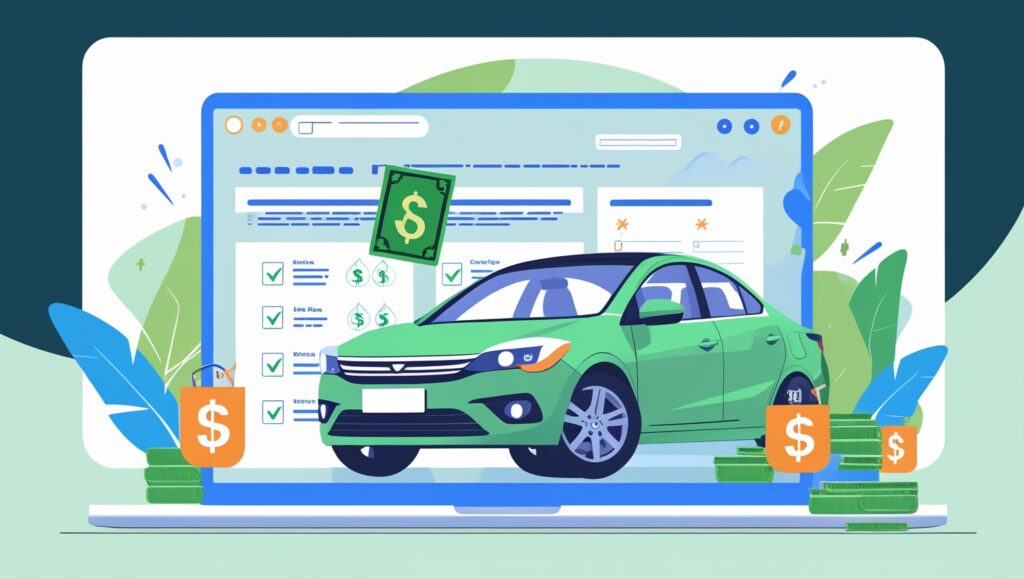When people hear the term “full coverage car insurance,” they often assume it means they’re completely protected no matter what. But in reality, there’s no official policy called “full coverage”—it’s more of a shorthand term used in the industry. And if you don’t understand what it includes (or what it doesn’t), you could end up overpaying or underinsured.
This guide breaks down what full coverage really means, what it includes, who needs it, and how to make sure you’re getting the right protection—without draining your wallet.
Get Car Insurance Calculator Quotes
What Is Full Coverage Car Insurance?
Let’s start with the basics: full coverage car insurance is not a single policy. Instead, it’s a bundle of coverages designed to protect both you and your vehicle from a wide range of situations.
Typically, full coverage includes:
- Liability Insurance (required in almost every state)
- Collision Coverage
- Comprehensive Coverage
- Sometimes: Uninsured/Underinsured Motorist Coverage and Medical Payments or PIP (Personal Injury Protection)
Let’s break those down.
Components of Full Coverage Explained
1. Liability Insurance
This is mandatory in most states. It covers damage you cause to other people or their property in an accident. However, it doesn’t pay for your own repairs or medical bills.
✅ Required minimums vary by state. You can check your state’s requirements via the California Department of Insurance.
2. Collision Coverage
Pays for repairs to your own vehicle if you hit another car, pole, fence, or any object—regardless of who’s at fault.
3. Comprehensive Coverage
This protects your car from non-collision-related damage, such as:
- Theft
- Vandalism
- Fire
- Falling objects
- Weather (hail, flood, etc.)
- Hitting a deer
4. Uninsured/Underinsured Motorist Protection
If you’re hit by someone who has no insurance or insufficient coverage, this helps cover your medical expenses and vehicle damage.
5. Medical Payments (MedPay) or PIP
These help pay for medical bills for you and your passengers—regardless of fault. PIP may also cover lost wages or rehab costs, depending on your state.
Who Actually Needs Full Coverage?
Full coverage isn’t for everyone—but for many, it’s a smart move. Here’s who should consider it:
- Drivers with newer or financed vehicles
Lenders almost always require full coverage if your car is leased or financed. - People who can’t afford to replace their car out-of-pocket
If your vehicle is totaled and you don’t have coverage, you’re stuck with the loss. - Drivers in high-theft or severe weather areas
If you live somewhere prone to hurricanes, wildfires, or theft, comprehensive coverage is a financial safety net.
On the other hand, if your car is older (say, worth less than $3,000), it may not be worth paying extra for collision or comprehensive. You can use tools like this one to compare what various coverage levels cost and decide what’s worth it for your situation.
How Much Does Full Coverage Cost?
The average cost of full coverage in the U.S. is about $1,700 per year, according to recent industry data. However, rates can vary wildly depending on your:
- Age
- Driving history
- Vehicle make/model
- Location
- Credit score (in most states)
To get a clear picture of what you might pay, we recommend using a fast comparison tool or getting multiple quotes side-by-side.
Full Coverage vs. Minimum Coverage: A Quick Comparison
| Feature | Full Coverage | Minimum Coverage |
|---|---|---|
| Covers other driver | ✅ | ✅ |
| Covers your vehicle | ✅ | ❌ |
| Includes theft/weather/fire | ✅ | ❌ |
| Usually required by lenders | ✅ | ❌ |
| Monthly cost | Higher | Lower |
Common Myths About Full Coverage
❌ “It Covers Everything, No Matter What”
Nope. Full coverage won’t pay for mechanical breakdowns, routine maintenance, or personal belongings stolen from your car (that’s usually under renters or homeowners insurance).
❌ “It’s Too Expensive to Be Worth It”
While full coverage costs more, it can save you thousands in a single accident or natural disaster. The key is getting the right coverage at the best rate—which you can do using a guide like this one on affordable insurance plans.
❌ “You Don’t Need It If You’re a Good Driver”
Even if you’re careful, you can’t control weather, wildlife, or other drivers. Comprehensive and uninsured motorist coverage protect you from the unpredictable.
Case Study: How Full Coverage Saved a Young Driver
Melissa, a 25-year-old from Florida, had full coverage on her 2021 Toyota Corolla. One night, her parked car was destroyed in a freak hailstorm. Because she had comprehensive coverage, her insurer covered the $6,800 in damages—minus her $500 deductible.
If she had only carried liability, she would’ve been on the hook for the entire amount.
Final Thoughts: Is Full Coverage Right for You?
At the end of the day, full coverage isn’t about spending more—it’s about being protected from life’s unexpected turns. It’s the difference between paying a small premium now or facing a massive bill later.
If your car still holds value, or if you simply want peace of mind every time you hit the road, full coverage is a smart investment.
Ready to see how much it would cost you? Start by comparing quotes online or check your state’s required limits on the official California insurance site.



